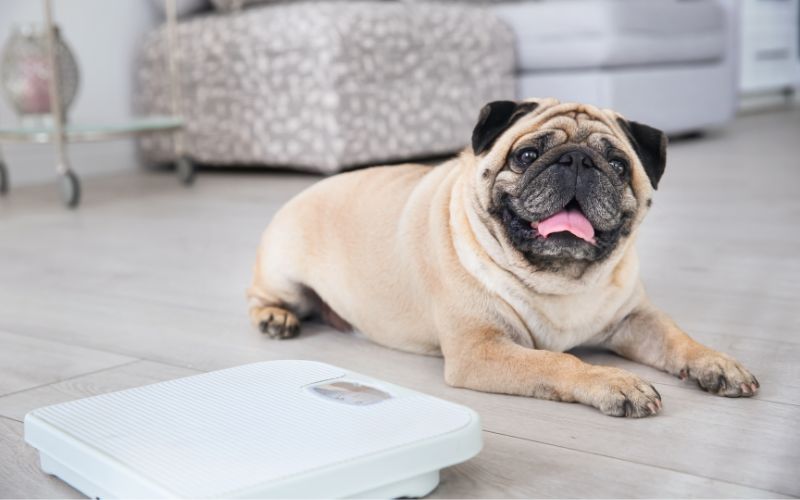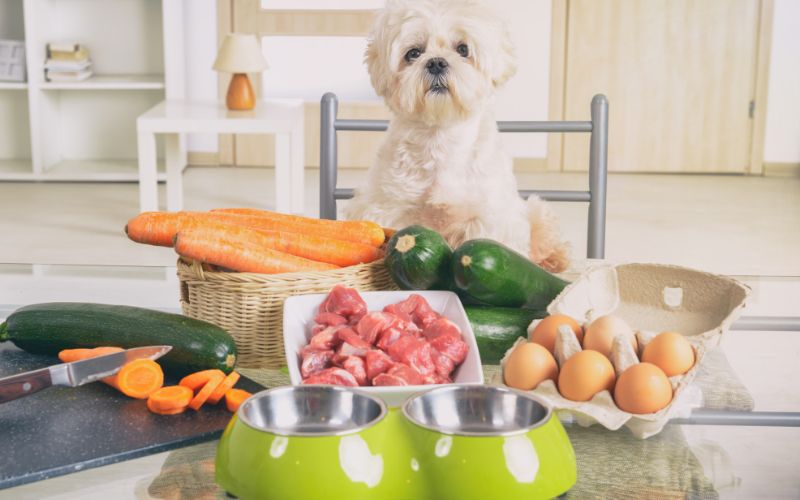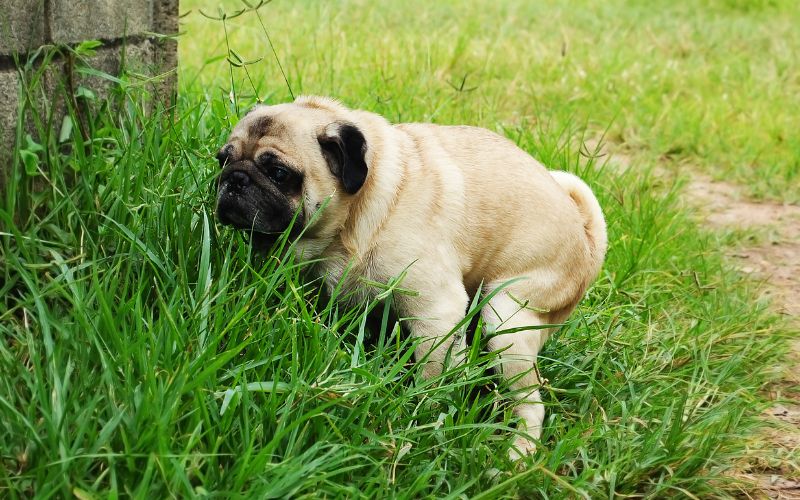We live in a world surrounded by an array of delicious foods, all with their own health benefits and downsides. One such element that makes up many of these foods is fat. We need fats as part of a healthy and balanced diet, and fat can also be pretty tasty, however too much can cause health issues.
The same rules apply when it comes to our canine companions. Like humans, dogs can be prone to weight gain and subsequent health issues as a result of their diet.
As pet parents, it is our responsibility to ensure that our dogs stay healthy, and are able to live the happiest, healthiest and most vital life possible. While occasional yummy treats can enrich your dog’s life, it is possible to have too much of a good thing.
Today, we are going to take you through some of the causes of dog obesity, how to identify if your dog may be at risk of being overweight, as well as offering some guidance on how to reduce your dog’s diet and keep them as healthy as possible.

How to tell if your dog is overweight
‘He's not fat, he's big boned!’ or ‘He’s not overweight, he’s just fluffy!’ We hear this often - hey, I have even used these excuses myself!
None of us want to believe there is anything wrong with our beautiful canines, let alone imagine that we have done anything to contribute to this. If left untreated, excessive weight gain in dogs can lead to more serious health conditions such as arthritis, diabetes and heart disease.
Weight gain and obesity in our beloved companions can be one of the most distressing things as a pet parent, as more often than not we are the ones responsible for the weight-gain. We show them we love them by feeding them yummy treats, but it is possible to go overboard.
Here are a few of the signs your dog may be overweight:
- Larger, rounder bodies and faces
- Unable to see your dog’s waistline, ribs and spine
- Sagging of the abdominals
- Lethargy
- Moving slowly and with difficulty, they may even need help getting around
- Reluctance to exercise
- Panting and obvious breathing difficulties
If you notice your dog experiencing any of the above symptoms, it may be worthwhile booking in for a check-up with your veterinarian for their support in tackling these health challenges.
Here’s a handy dog weight chart from Daily Paws that can help you to determine your dog’s body shape and tell if your dog is carrying extra weight.

Causes of dog obesity
At the end of the day, obesity in dogs comes down to diet and exercise, both of which are our responsibility.. Energy input and output should be closely monitored and regulated to ensure the best routine for your dog.
The most common causes of dog obesity include:
- Overfeeding: depending on the age, size and breed of your dog, they will require different portion sizes, with some dogs needing more and some less. Measuring out portions for your dog and implementing a proper daily feeding routine will help you keep track of your dog’s intake.
- Lack of exercise: similarly to their diet, different dog breeds, ages and sizes will need varying levels of exercise for optimum maintenance. Exercise and play is vital not only for your dog’s health but also for enrichment, socialising and mental stimulation.
Not sure how much to exercise your dog? Then check out this handy dog exercise guide from Australian Dog Lover.
- Excessive treats or table scraps: any dog owner will know the lure of the puppy eyes gazing up from under the table at meal times, and many of us can’t resist dropping a few tidbits for our dogs to gobble up happily. This is fine on occasion, but regular treats and scraps between meals can contribute to excessive weight gain and can often do more harm than good.
- Underlying health conditions: weight gain in dogs can sometimes be down to underlying health conditions which are out of your control. If you feel you have a healthy diet and exercise routine for your dog yet find that they are still gaining weight, consult your vet to rule out any health issues that may be contributing to this.
- Age: the age of your dog can also be a factor, as our dogs are likely to be less active as they get older.
The great news is that obesity in dogs is extremely preventable, and so with the right diet and exercise routine, as well as medical intervention if you suspect underlying causes, you can keep your pup in tip top condition.

What fats are good/bad for dogs?
Fats are not all bad. There are many good fats that our dogs need in their diets in order to keep them in the best condition.
Certain necessary fats provide energy, keep us warm and contribute to an overall healthy internal system. Luckily, we have just the thing to help you introduce all the right healthy fats into your dog’s diet…
Our Wellbeing Essentials Complete 22 contains essential Fatty Acids, Omega 3 and 6; these are called ‘essential’ because the body can’t make them itself, and thus needs to obtain them from dietary sources.
These healthy fats are vital to implement into your dog’s diet as they help feed the brain, skin, and maintain the condition of their coat.
Omega 3 is also an anti-inflammatory, and having an abundance of it balances out the more pro-inflammatory fats.
When it comes to the not-so-good fats to keep an eye out for, you are going to want to watch for saturated fats. These are the dietary fats which can contribute to weight gain and further health issues.
You can learn more about the ingredients in our Complete 22 blend here.

Diets for overweight dogs: homemade dog food for weight loss
There are a few things you can do to help minimise the more dangerous fats from entering your dog’s daily diet:
- One of the sneakiest ways that fat ends up in our dog's system is via the bones we provide. There can be massive amounts of fat on a bone, and so these should be given in moderation rather than as a diet staple.
- Animal skin can contain considerable amounts of fat, and so if preparing meat for your dog, ensure that the skin is removed along with any excess fat from the meal.
- Always check the ingredients and nutritional value of pre-prepared dog foods. If your dog is prone to weight gain or unable to exercise as much as they need, it may be worth making your dog’s food at home from natural and nutrient dense ingredients.
One of the most effective ways to ensure no hidden fats or nasty ingredients are sneaking into your dog’s diet is indeed through homemade feeding. This way, you can be confident that you’re selecting high-quality, ethically sourced and nutritionally packed foods and that your pup’s meals are as balanced as they possibly can be too.
New to homemade feeding? Then you may want to take a look at our blog on Homemade Dog Food Made Easy here.

In Conclusion
If you feel like your dog is slightly overweight (or even more than slightly) it may be time to assess what you're feeding them as well as how much and even their exercise levels.
Please don’t feel shamed or guilty about your dog’s weight - as it might be due to factors outside your control or simply because they’re being loved a little too much! The important thing here is that we take action to get their health assessed by a veterinarian and make the appropriate adjustments with their expert support.
By being proactive in helping our canines shed the pounds, we’re helping their overall wellbeing and health. Just remember to always consult your vet before making any considerable changes to your dog’s nutrition to ensure you are following an appropriate blueprint for optimum canine health.
With love, care and a watchful eye you can avoid obesity and keep your pup jumping and dancing for years to come.




